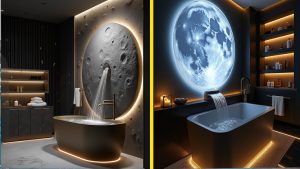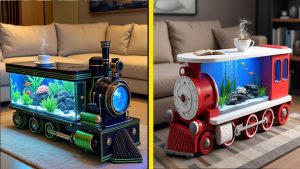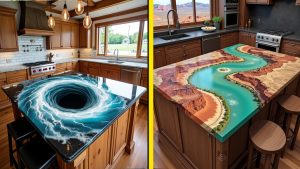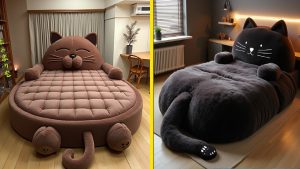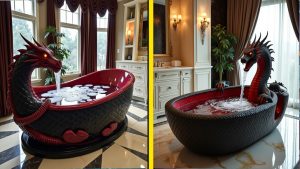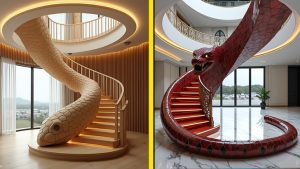Imagine walking into a kitchen where the centerpiece is a mesmerizing display of ethereal jellyfish, gracefully floating within a beautifully crafted island. This fusion of art and functionality is the essence of jellyfish kitchen islands—a trend that’s making waves in interior design. These unique installations bring the tranquility and beauty of the ocean right into your home, transforming ordinary kitchen spaces into extraordinary experiences.
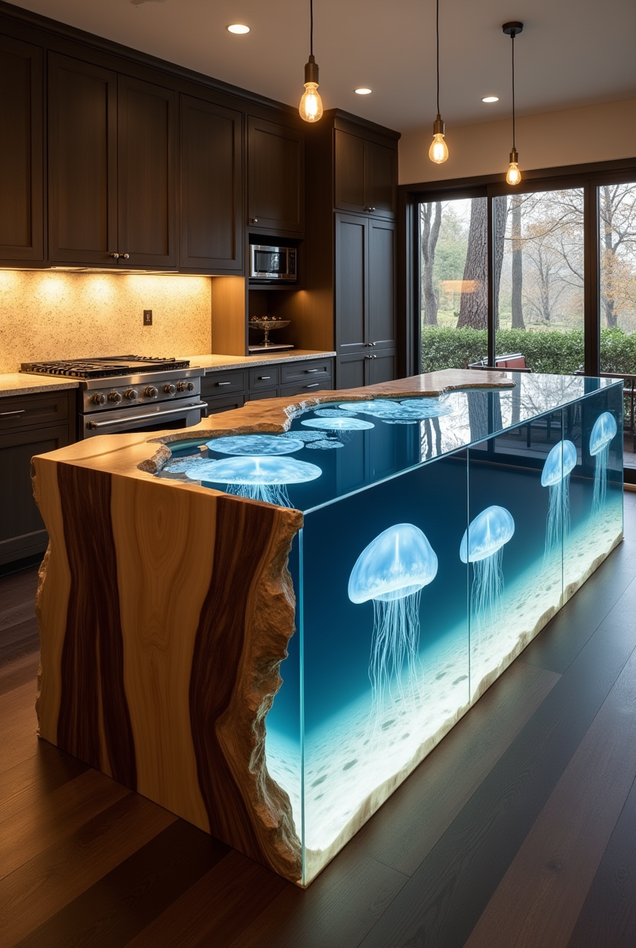
The Allure of Jellyfish in Interior Design
Jellyfish have long captivated human imagination with their delicate forms and serene movements. In interior design, they symbolize fluidity, grace, and a connection to the natural world. Incorporating jellyfish motifs or displays into home decor not only adds a touch of elegance but also creates a calming ambiance reminiscent of the ocean’s depths. This fascination has led to the rise of jellyfish-inspired elements in modern interiors, with kitchen islands becoming a focal point for such artistic expressions.
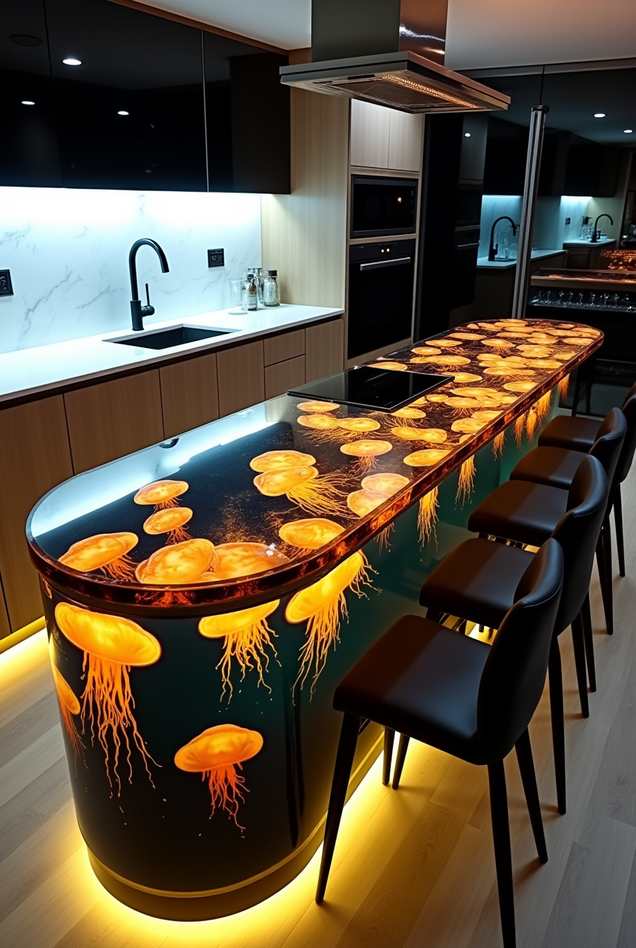
Epoxy Jellyfish Kitchen Islands: Art Meets Functionality
Epoxy jellyfish kitchen islands are a testament to the seamless blend of art and practicality. The creation process involves skilled artisans embedding lifelike jellyfish replicas within layers of clear epoxy resin. This meticulous crafting results in a stunning visual effect, where the jellyfish appear suspended in motion, capturing the essence of an underwater scene. The choice of materials extends beyond epoxy; designers often incorporate live-edge wood, natural stone, or glass to enhance the island’s aesthetic appeal and ensure it complements various kitchen styles.
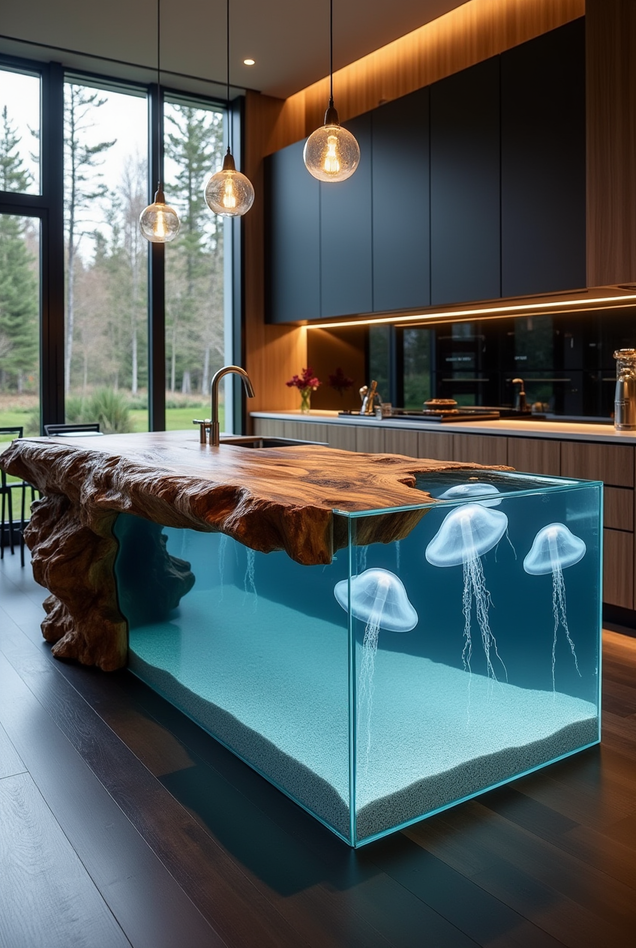
Customization Options for Epoxy Jellyfish Islands
One of the most appealing aspects of epoxy jellyfish kitchen islands is the high degree of customization available. Homeowners can tailor their island to fit specific dimensions, ensuring it harmonizes with the kitchen’s layout. Color schemes can be selected to match existing decor, and integrated LED lighting can be added to illuminate the jellyfish, creating a captivating glow, especially in low-light settings. Additional elements such as live-edge wood accents or natural stone countertops can further personalize the design, making each island a unique masterpiece.
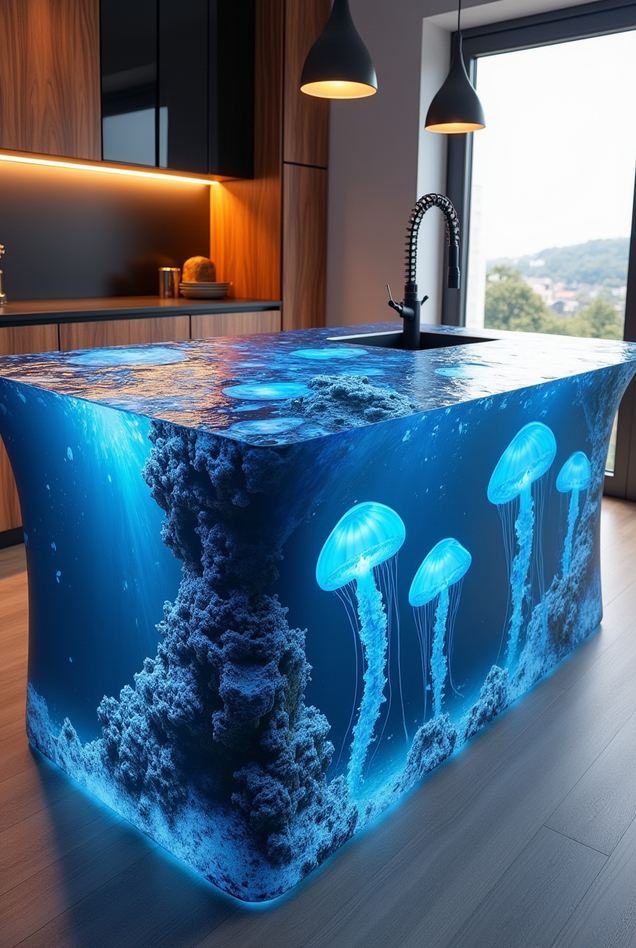
Maintenance and Durability of Epoxy Surfaces
Epoxy surfaces are renowned for their durability and ease of maintenance, making them ideal for high-traffic areas like kitchens. Regular cleaning with mild soap and water keeps the surface looking pristine, while the non-porous nature of epoxy resists stains and bacterial growth. To maintain its luster, it’s advisable to use cutting boards and avoid placing hot pots directly on the surface. In the event of minor scratches or wear, professional refinishing can restore the epoxy to its original condition, ensuring the island remains a stunning centerpiece for years to come.
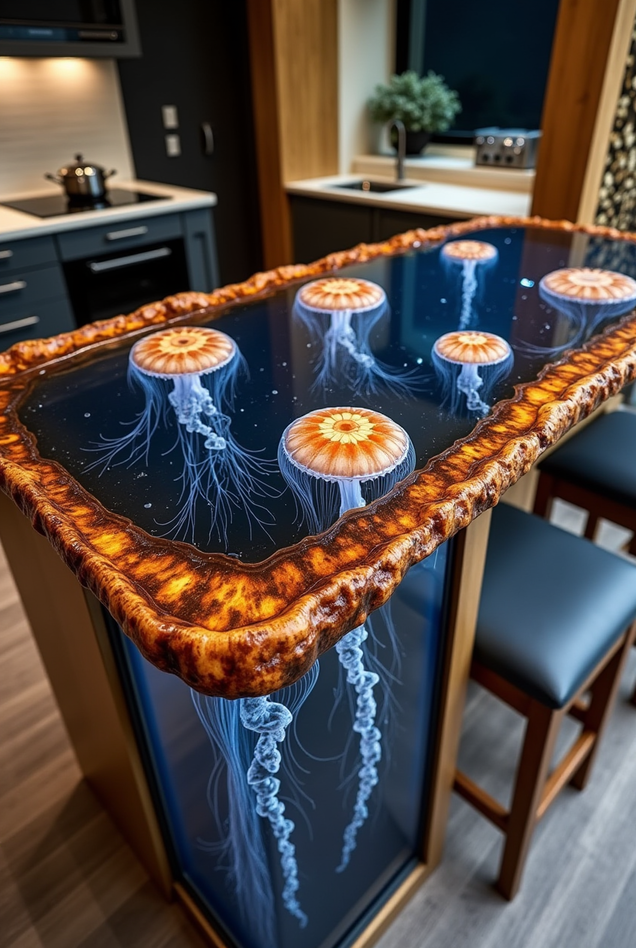
Aquarium Jellyfish Kitchen Islands: Living Art in Your Home
For those seeking an even more immersive experience, aquarium jellyfish kitchen islands offer the allure of live marine life within your culinary space. These installations integrate a functioning aquarium into the kitchen island, housing live jellyfish that glide gracefully through the water. This living art piece not only serves as a conversation starter but also brings the soothing presence of nature indoors, enhancing the overall ambiance of the home.
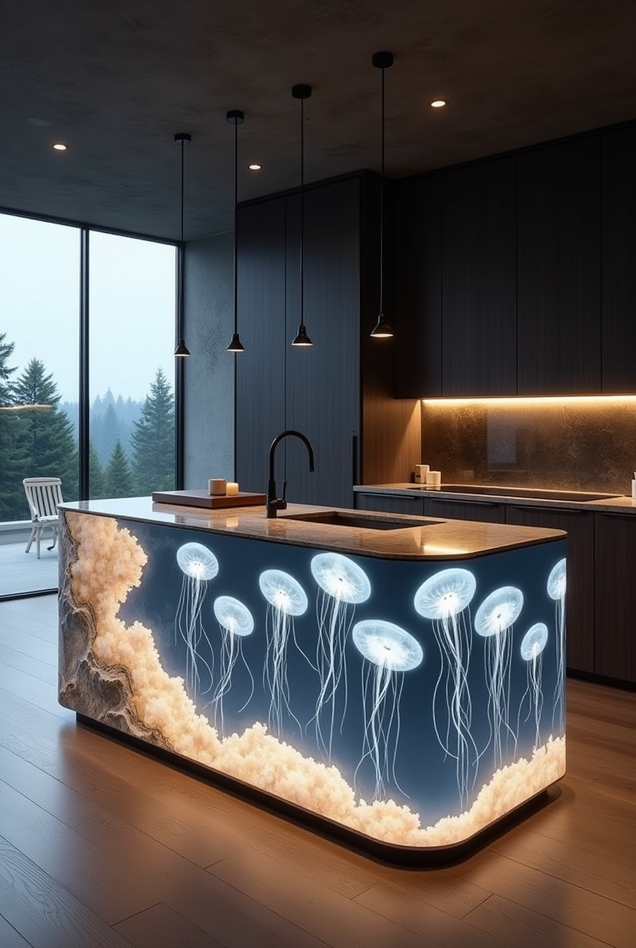
Designing an Aquarium Jellyfish Kitchen Island
Creating an aquarium jellyfish kitchen island requires careful planning and design to ensure both functionality and aesthetics are achieved. The aquarium must be seamlessly integrated into the island’s structure, with considerations for accessibility and maintenance. Materials used should be resistant to moisture, and the design should include adequate ventilation and lighting to support the jellyfish’s habitat. Collaborating with professionals who specialize in aquatic installations ensures that the final product is both beautiful and sustainable.
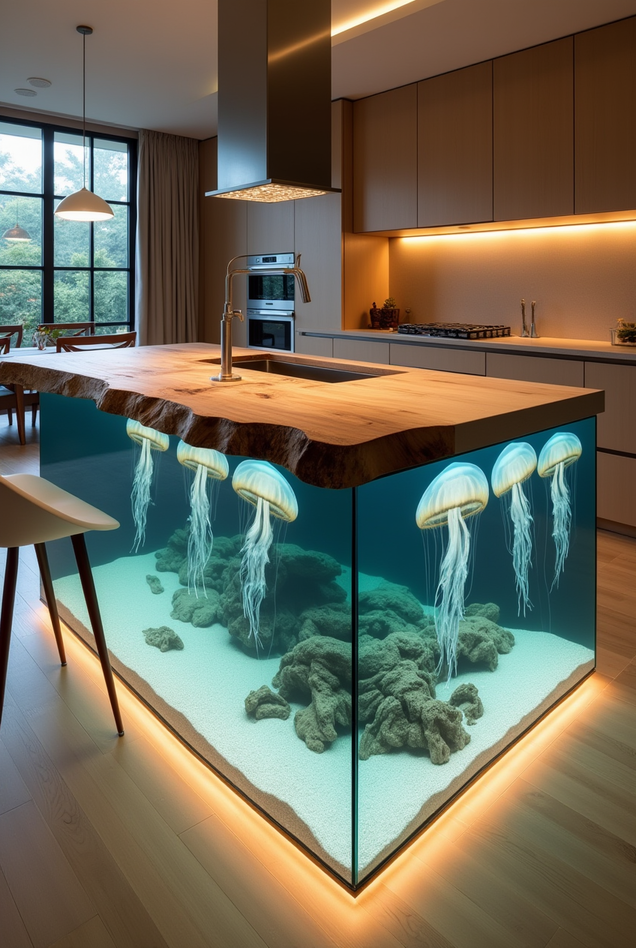
Care and Maintenance of Live Jellyfish
Maintaining live jellyfish necessitates a commitment to regular care to ensure their health and longevity. Jellyfish require specific water conditions, including controlled temperature, salinity, and pH levels. Regular feeding with appropriate diets is essential, and the aquarium’s filtration system must be monitored to maintain water quality. While the presence of live jellyfish adds a dynamic element to the kitchen, prospective owners should be prepared for the responsibilities that come with their care.
Environmental Considerations
Incorporating live jellyfish into home design raises important environmental considerations. It’s crucial to source jellyfish ethically, ensuring they are obtained through sustainable practices that do not harm wild populations. Additionally, maintaining an aquarium consumes energy, so implementing energy-efficient equipment and practices can help minimize the ecological footprint. Homeowners are encouraged to research and engage with reputable suppliers and professionals to make informed decisions that align with environmental stewardship.
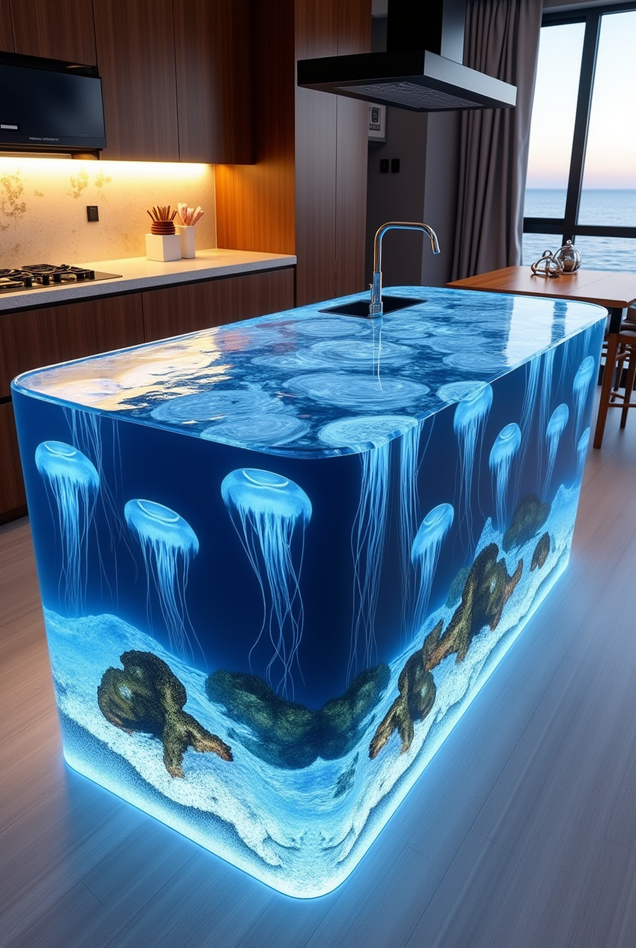
Comparing Epoxy and Aquarium Jellyfish Kitchen Islands
When deciding between an epoxy or aquarium jellyfish kitchen island, several factors come into play. Epoxy islands offer a low-maintenance option with stunning visual effects, ideal for those seeking beauty without the responsibility of live animals. In contrast, aquarium islands provide the unique experience of observing live jellyfish but require ongoing care and maintenance. Cost considerations also differ, with live aquariums typically involving higher initial investments and operational expenses. Ultimately, the choice depends on personal preferences and the level of commitment one is willing to undertake.



